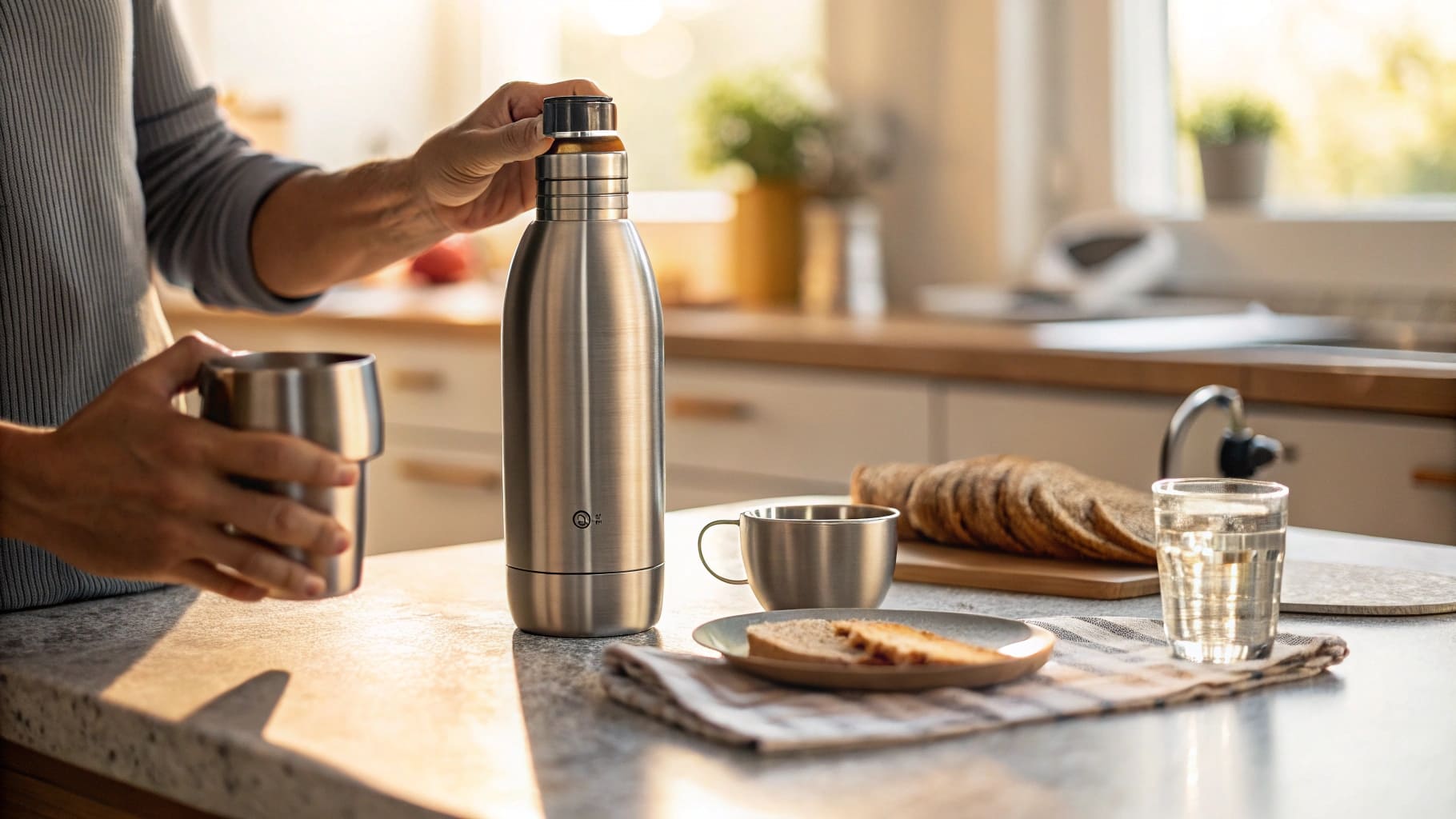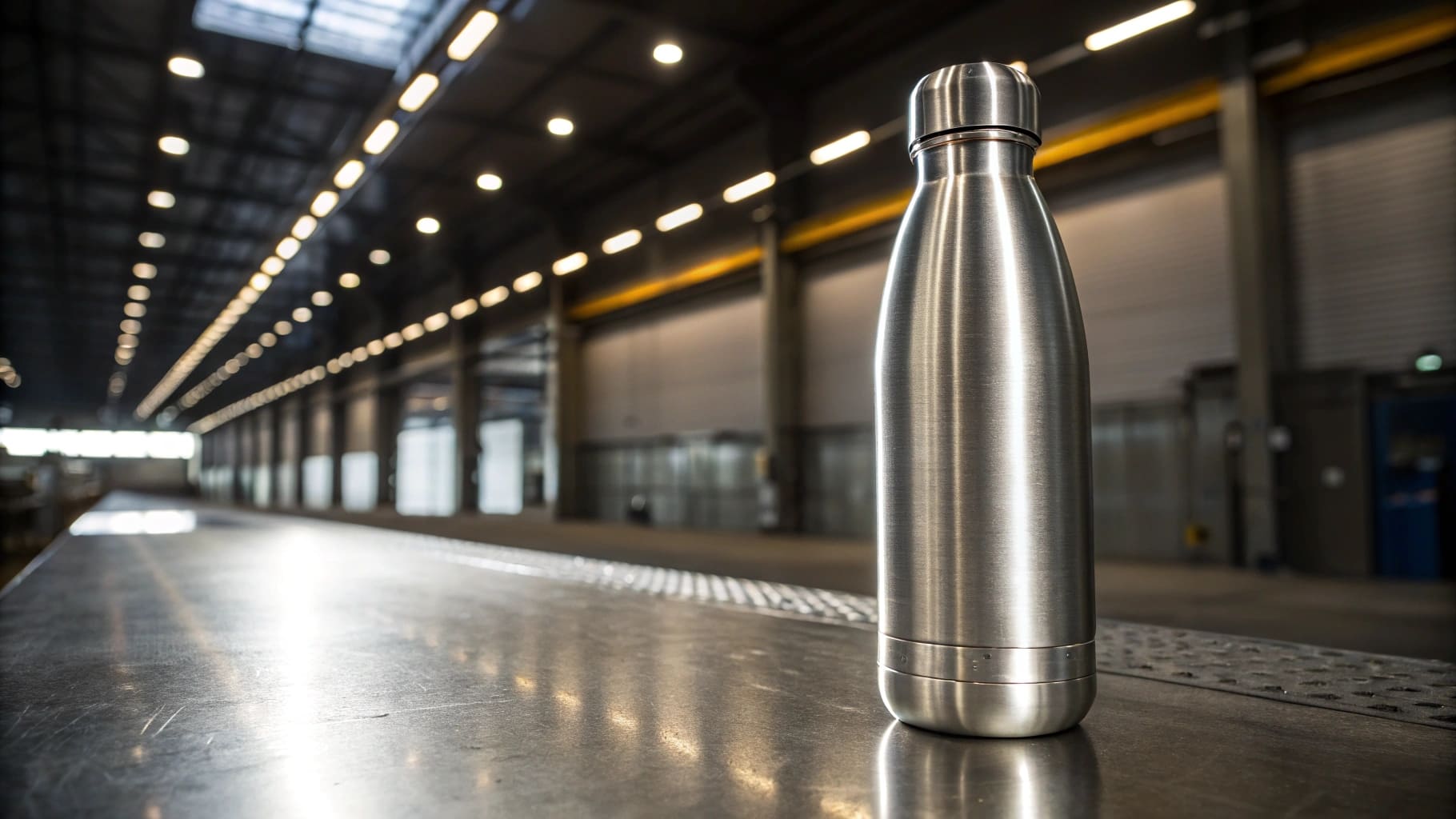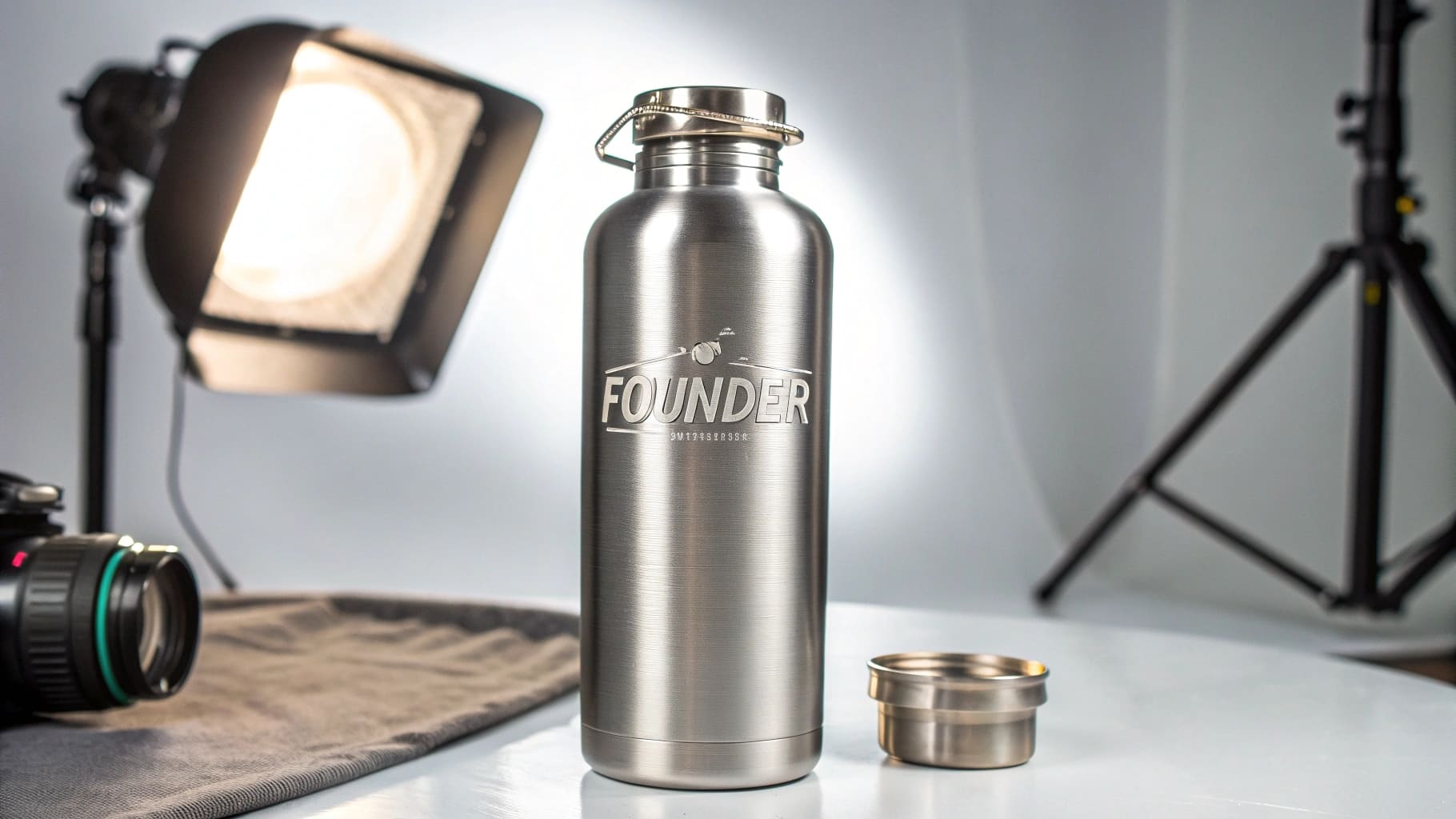Tired of lukewarm drinks on long hikes? Unsure which bottle truly meets trail demands? Discover the ideal hiker's companion for your customers.
The best insulated steel bottles for hikers balance robust 304 stainless steel, effective double-wall vacuum insulation, and a lightweight, packable design. They ensure drink temperature control without adding excessive weight.

When I talk to clients like Mark Shenng, who are looking to source products for specific outdoor niches, the conversation always turns to what "best" really means for their customers. It's not just about one single feature. It is about a combination that works perfectly for the end-user, the hiker in this case. Let's look closer at what hikers really need when they are out on the trail. This understanding helps us provide the right products.
What is the best bottle for hiking?
Struggling to find a bottle that survives rough trails? Want hydration that's convenient and reliable for your customers? The right hiking bottle is crucial.
The best bottle for hiking overall is durable, lightweight, leak-proof, and easy to carry. For many, insulated stainless steel offers the best mix of temperature retention and toughness. Some hikers prioritize minimal weight above all else.

For procurement officers like Mark, understanding these hiker preferences is very important. When you are sourcing bottles for the hiking market, "best" is really a balance of several factors. It's my job at Icobottle to help you find that balance.
Key Features Hikers Look For
Hikers need bottles that can take a beating. Imagine a bottle dropped on rocks or stuffed tightly in a full backpack. Durability is a must. This is where good quality 304 stainless steel really shines. It’s tough. It also resists rust, which is important for a product that holds water.
Weight is also a huge factor for any hiker. Every ounce, or every gram, counts when you are on a long trek. So, while insulation is a great feature, a super heavy bottle often gets left behind at home. We need to find a good middle ground.
Leak-proof lids are absolutely non-negotiable. Nobody wants a wet backpack because their water bottle leaked. A secure seal is vital to protect other gear. My team and I always check the seals on our bottle samples.
Ease of use also matters a lot. Can the hiker open the bottle easily, even with gloves on? Can it clip onto a pack with a carabiner? These small details can make a big difference in the user experience.
Here's a simple breakdown for your consideration when you are sourcing hiking bottles:
| Feature | Importance for Hikers | Why? | Our B2B Focus (Icobottle) |
|---|---|---|---|
| Durability | Very High | Resists drops, rough handling on trails | We use high-quality 304 stainless steel |
| Weight | High | Affects overall pack load, hiker's energy | We offer streamlined, lighter designs |
| Leak-Proof Lid | Very High | Prevents spills, protects valuable gear | We ensure quality seals, offer various lid types |
| Ease of Carry | High | Carabiner loops, comfortable grip needed | We design with practical carry options in mind |
| Capacity | Medium-High | Enough water for the trek, not too bulky | We offer various common and popular sizes |
I always tell my clients like Mark: think about the actual hiker using the product. They are carrying everything they need on their back. The water bottle must be an asset to them, not a burden. This thinking helps us select the best products to offer.
What is the best insulated water bottle?
Hot coffee turning cold too fast on a chilly morning hike? Iced water warming up before your customers reach the summit? They need truly effective insulation on the trail.
The best insulated water bottle uses double-wall vacuum insulation, typically made with 304 stainless steel. This technology is proven to keep drinks cold for up to 24 hours or hot for up to 12 hours. This is ideal for varying trail conditions.

Mark often asks me about insulation standards. This is especially true for products he plans to rebrand and sell in Canada. "Best" here means reliable performance that his customers can trust. He knows quality is key to his brand's reputation.
Understanding Insulation Technology
Double-wall vacuum insulation is the gold standard for keeping drinks at temperature. It works by creating a vacuum, an empty space, between two walls of steel. This vacuum stops most heat transfer – that's conduction and convection. So, the temperature outside the bottle doesn't easily affect the liquid inside.
The quality of the 304 stainless steel we use also matters a lot. It’s food-grade, which means it's safe for drinks. It doesn't impart any strange flavors to the water or coffee. And, of course, it’s very durable.
For hikers, this technology means their cold water stays refreshingly cold, even on a hot, sunny day. Or their hot tea or coffee stays warm and comforting on a chilly morning. This can be a real morale booster on a tough hike.
But, again, for hikers, there's always a trade-off to consider. More insulation sometimes means thicker walls for the bottle. Thicker walls can mean more weight. As we discussed, hikers are very sensitive to weight.
At Icobottle, we work hard to optimize this balance. Our goal is to provide excellent insulation performance without making the bottles too heavy or bulky for a hiker's pack. It's a technical challenge we enjoy.
Consider these points when you are discussing insulated bottles with your factory or supplier:
| Insulation Factor | Detail | Implication for Hikers | What We Offer (Icobottle) |
|---|---|---|---|
| Vacuum Seal Quality | The integrity of the vacuum between the walls | This directly impacts insulation time | We have rigorous quality checks on all seals |
| Steel Grade & Thickness | We use 304 stainless; thickness impacts weight/durability | A balance is needed for practical trail use | Our designs are optimized for weight and strength |
| Lid Insulation | Some lids are also designed with insulation | This further enhances temperature retention | We offer options for insulated lids if needed |
| Overall Design | Streamlined shapes can often be lighter | This means better packability and less bulk | We focus on efficient and practical shapes |
I remember one client who was targeting serious mountaineers. They needed extreme temperature retention for very cold conditions. We sourced a slightly heavier bottle for them, but the insulation performance was absolutely unmatched. It’s all about matching the specific product features to the specific hiker's needs and environment. This is where our expertise can help you.
Why do hikers use Smartwater bottles?
Do you see some hikers carrying flimsy plastic bottles on the trail? Do you wonder why they skip durable, insulated steel bottles? There's a specific reason for this popular choice among a certain group of hikers.
Some hikers, especially thru-hikers who cover very long distances, use Smartwater bottles. They do this because these bottles are extremely lightweight. They also fit conveniently into the side pockets of many backpacks. These hikers prioritize minimal weight over insulation and long-term durability.

This Smartwater bottle trend is quite interesting from a product development perspective. Mark once asked me, "Aries, if these plastic bottles are so popular with some hikers, should I be looking into sourcing plastic bottles too?" It’s a valid question for someone in procurement.
My answer to him, and to you, is: understand why they use them. It’s almost always about one primary thing: weight. Or, more accurately, the lack of it.
The Ultralight Philosophy
Thru-hikers are people who hike trails like the Appalachian Trail or the Pacific Crest Trail. These hikes can take months. For these hikers, every single gram, or ounce, of weight in their pack counts. For them, saving a few ounces on a water bottle means they can carry a little more food, or simply have a lighter, more comfortable pack. This can make a huge difference over hundreds or thousands of miles.
Smartwater bottles offer them a few key advantages:
- Extremely Light: They are much, much lighter than any insulated steel bottle on the market.
- Disposable/Recyclable: They are easy to replace if lost or broken (though the environmental aspect of disposability is a concern for some hikers and for us).
- Compatible: They often fit very well with common backcountry water filters like the Sawyer Squeeze. This is a big convenience.
However, by choosing these bottles, they sacrifice a lot:
- No Insulation: Water gets warm very quickly in the sun. Drinks won't stay cold.
- Less Durable: These plastic bottles can crack or puncture much more easily than a steel bottle.
- Not for Hot Liquids: Obviously, you can't put hot tea or coffee in them.
So, what does this trend mean for B2B suppliers like myself at Icobottle, and for buyers like Mark? It means there's a definite segment of the outdoor market that highly values lightweight gear. They are willing to make compromises to save weight.
The opportunity for us in the stainless steel bottle industry is to offer insulated stainless steel bottles that are designed to be as light as possible. We can't match the weight of a thin plastic bottle, but we can get closer while still offering the benefits of steel.
We can achieve this through several strategies:
| Lightweight Strategy | Description | Benefit for Hikers | Icobottle's Approach |
|---|---|---|---|
| Innovative Steel Gauges | Using slightly thinner, yet still strong, high-quality steel | This reduces overall weight without losing too much durability | We are always exploring advanced steel options and manufacturing techniques |
| Streamlined Designs | Minimizing extra material, focusing on pure function and ergonomics | This means less bulk in the pack and a lighter feel in the hand | We work on optimizing bottle shapes for efficiency |
| Lightweight Lid Options | Offering simpler, non-insulated lids where appropriate for weight saving | This can shave off a few more grams from the total weight | We provide diverse lid choices to suit different needs |
I always advise clients like Mark: don't try to directly compete with a disposable plastic bottle on weight alone. It's a different product category. Instead, offer a premium, durable, insulated alternative that is consciously designed to be lighter than standard insulated bottles. This approach can capture those hikers who want better performance and durability than plastic, but still watch their pack weight very carefully. It's about offering a better, more sustainable long-term solution.
Conclusion
For hikers, the best insulated bottle masterfully balances durability, effective insulation, and manageable weight. Sourcing high-quality, lightweight steel options directly meets this specific trail need effectively for your customers.

